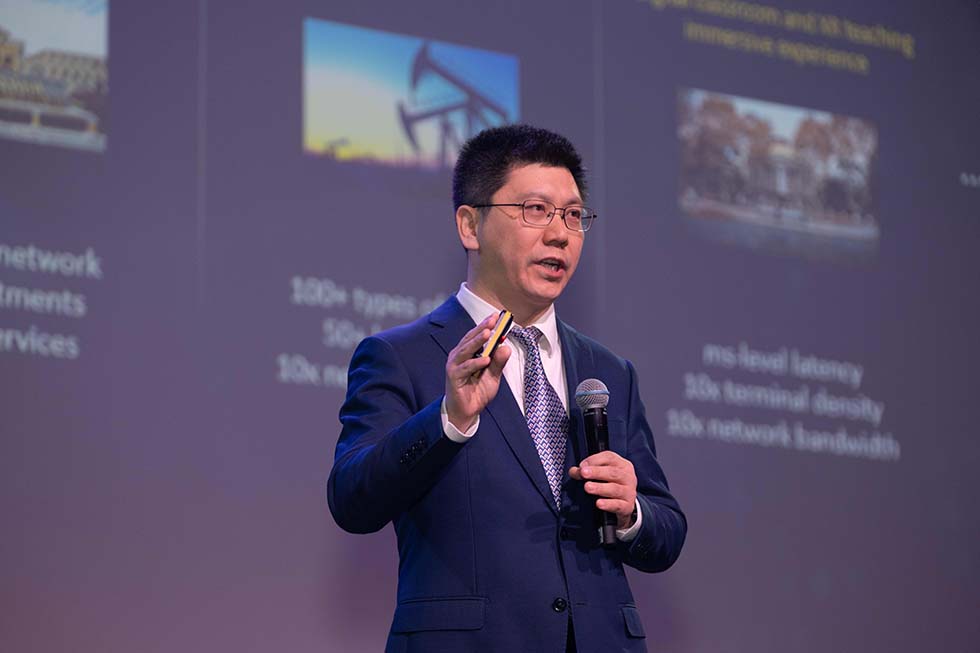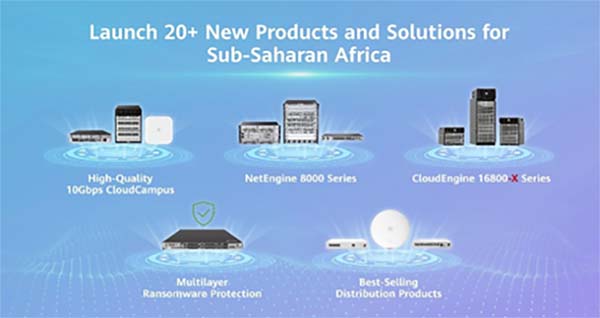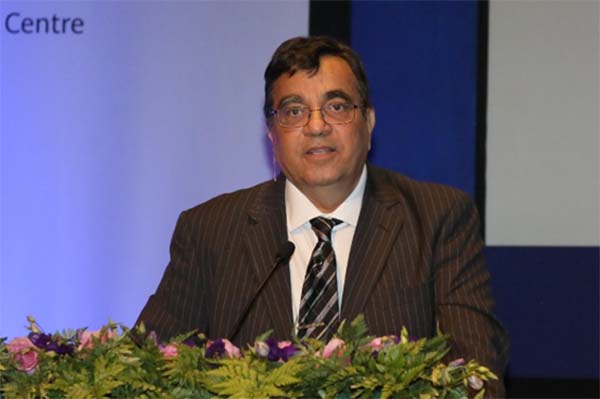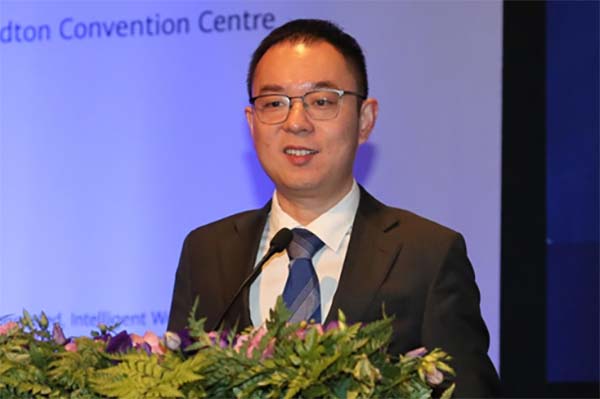Huawei Data Communication launched more than 20 innovative new products and solutions at the recent Eco-Connect Sub-Saharan Africa 2023 event, which was attended by over 3000 customers and partners from across the continent. The launches were geared towards government, vertical industries, SMMEs and SOHO markets in Sub-Saharan Africa.
Eco-Connect also played host to the IP Network Sub-Forum under the theme “Innovations Never Stop” where top experts and benchmark customers in the industry, including Dr. Osama, Chair of IEEE 802.11ax Task Group, Donald Eastlake, Chair of the IETF BABEL and MANET Working Groups, Kenya MOIC-DE, UNISA, and Vumatel, shared industry development trends, the latest technological achievements, and successful digitalization practices.
A digital development wave has swept the world, and the digital economy has become a new engine for economic development. For developing countries, the digital economy has played a particularly important role in boosting GDP. This is why South Africa, Nigeria, Kenya and other countries in Sub-Saharan Africa have put forward clear plans and goals for digital economic development.
IP Networks, which carry core services in a number of industries, and cover production and administrative processes of business and enterprises, are among the most critical forms of new digital infrastructure, creating the foundation of the digital economy.
During the event, Steven Zhao, Vice President of Huawei’s Data Communication Product Line, spoke about continuous investment in research and development as a key to their customer strategy.
“Huawei Datacom constantly innovates and upgrades its Intelligent Cloud-Network Solution, diving deep into industry scenarios to deliver more than 20 innovative product portfolios, to contribute to our customers and partners business success.”

Steven Zhao, Vice President of Huawei Data Communication Product Line, delivered a keynote speech.

Huawei launched 20+ innovative products and solutions for Sub-Saharan Africa region.
Government and vertical industries
For government and vertical industry customers, Huawei continuously upgrades network coverage, intelligence, quality assurance, security and trustworthiness capabilities to support efficient and reliable core services.
At production facilities, its TSN industrial switch supports dual-fed and selective receiving, and enables a microsecond-level latency, reducing production interruption time by 80%. In office settings, high-quality 10Gbps CloudCampus provides 30 Gbps Wi-Fi 7 access, improving user concurrency capability by 30%.
Dr. Osama Aboul-Magd, Chair of IEEE 802.11ax Task Group pointed out how Huawei is pioneering Wi-Fi technology innovation.
“Huawei ranks as number one in the world on Wi-Fi 7 standards, and is a leading player in the fields of network-wide gigabit, real-time intelligent control, and harmonized IoT and sensing. Furthermore, many innovative technologies such as dynamic zoom smart antenna, intelligent multi- media scheduling, air interface slicing, and CoSR multi-AP coordination are also proposed by Huawei.”

Dr. Osama, Chair of IEEE 802.11ax Task Group, delivered a speech.
In the field of Wide Area Networks (WAN), Huawei has innovated based on “enhanced” technologies. SRv6 simplifies the protocol and enables network provisioning in minutes, so that public services can be quickly rolled out. FlexE network slicing and E2E MACsec encryption help industry customers carry IT and OT services on one network and isolate services securely.
Donald Eastlake, Chair of the IETF BABEL and MANET Working Groups, introduced the latest IPv6 Enhanced progress and its typical applications in industries such as carriers, ISPs, and railways. He said SRv6 is a mature technology, adding that Huawei has deployed more than 160 networks around the world.

Donald Eastlake, Chair of the IETF BABEL and MANET Working Groups, delivered a speech.
In the data center offering, Huawei has upgraded CloudFabric to work with Digital Map to implement unified multi-cloud and multi-vendor service deployment. With exclusive intelligent scheduling algorithms, industry customers can obtain higher computing power.
In terms of network security, Huawei unveiled the industry’s first multilayer ransomware protection solution that leverages endpoint-network-storage collaboration. This solution uses an exclusive AI clustering algorithm to accurately identify ransomware. The detection rate is higher than 99.9%, and threats can be handled in minutes.
Small and medium-sized enterprises
For small and medium-sized enterprises, Huawei launched eight new portfolios that are “easy to install, easy to use, and easy to manage.” These portfolios help customers quickly build high-quality networks. For example, in education, central switches and remote units simplify the network architecture. Remote units do not require local power supply and have no fans. This can build green classrooms for 310,000 primary and secondary schools in Sub-Saharan Africa.
In the healthcare industry, the new zero-roaming distributed Wi-Fi, allows for one AP to cover 64 rooms, helping 100,000 medical institutions in Sub-Saharan Africa improve their healthcare efficiency.
In retail, network templates are used to configure networks in batches. One device is used to complete the entire branch network, which has helped 600,000 retail stores in Sub-Saharan Africa deploy networks quickly.
SOHO Market
For the Small Office/ Home Office (SOHO) market, Huawei launched the Huawei eKit brand and “Easy” distribution products, including the multi-service gateway, switch, and WLAN series. These products are “Easy to buy, Easy to sell” for partners, “Easy to install, Easy to maintain” for engineering contractors and “Easy to learn, Easy to use” for end users.
Through these products, Huawei provides high-quality and convenient network experience for SOHO scenarios such as budget hotels, retail stores, commercial stores, and small offices.

Vincent Chen, Vice President of Enterprise Business Group, Huawei Sub-Saharan Africa Region.
In the journey of digital transformation, as the saying goes: “If you want to go fast, go alone. If you want to go far, go together.”
Vincent Chen, Vice President of Enterprise Business Group, Huawei Sub-Saharan Africa Region, said “Huawei has more than 1,000 partners in the Sub-Saharan Africa Region, and cooperates with customers and partners to explore and address the challenges faced by industry digitalization. Huawei is working to provide technical enablement for more enterprises, and accelerate the digital development of Sub-Saharan Africa.”
